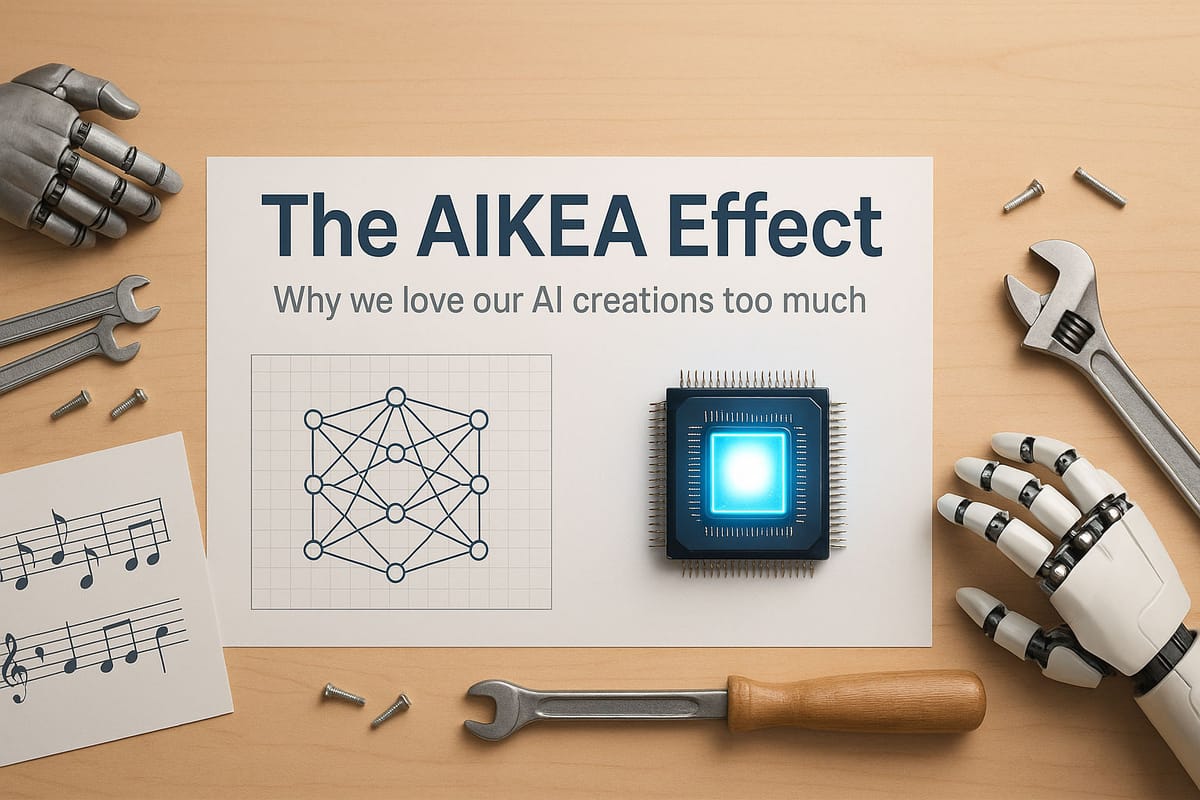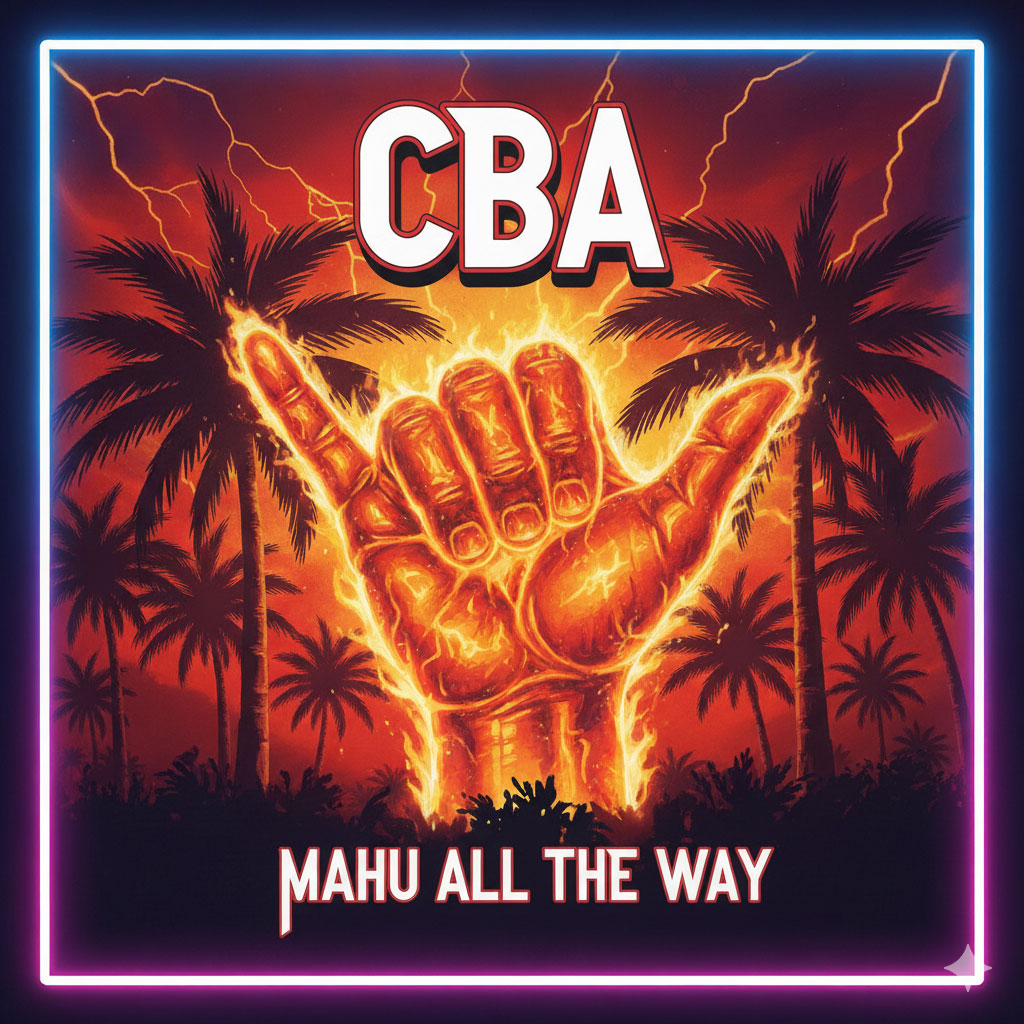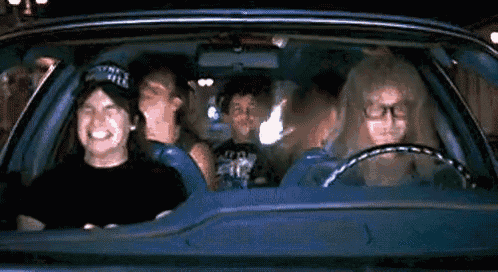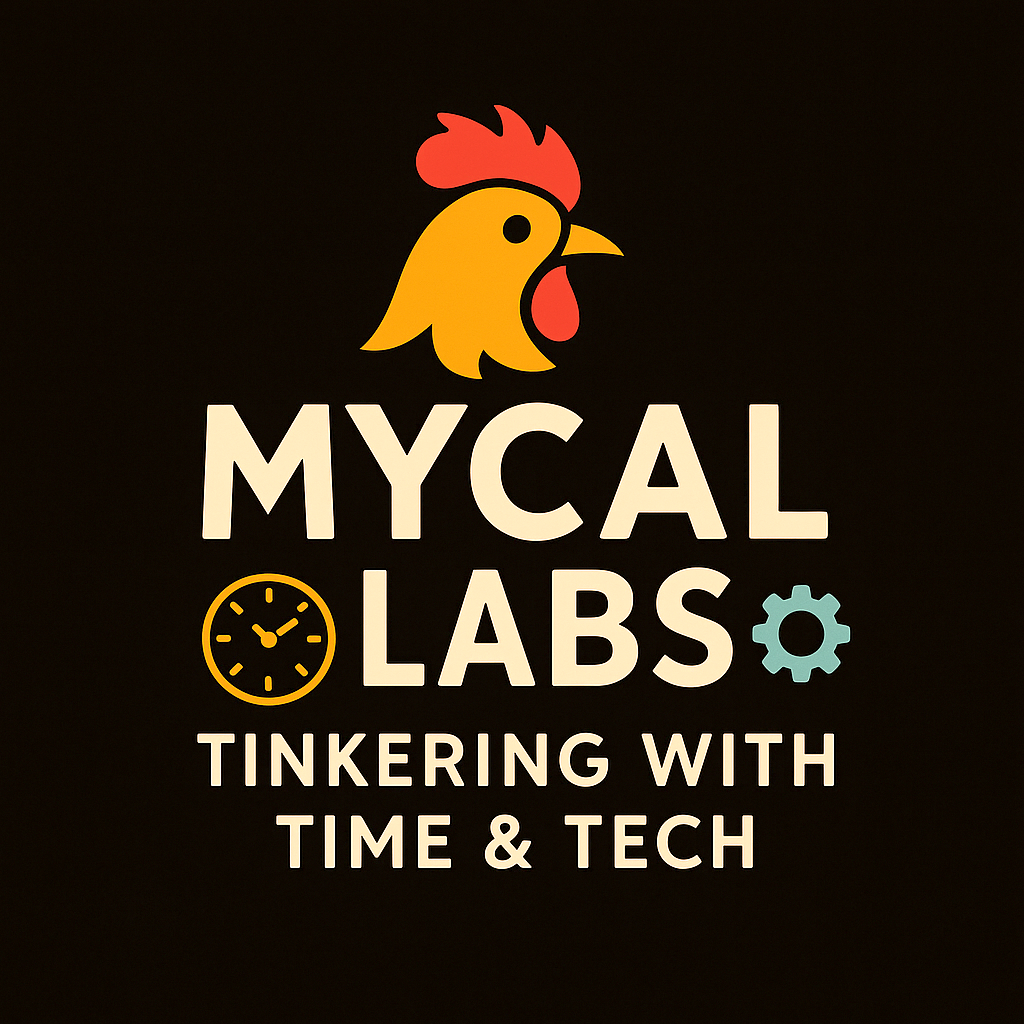The AIKEA Effect: The Psychology of Loving Our AI Creations
A road trip, an 80s rock anthem, and the strange psychology of why people fall in love with their AI-made art.

Tinkering with Time, Tech, and Culture #19

The Road Trip Song
Caffeine, bad gas-station snacks, and too many inside jokes. It was an old-school road trip to L.A. for a friend's big birthday — somewhere around Kettleman City, I pulled out my laptop and a hotspot.
“Let’s make him a birthday anthem,” I said.
The car went quiet. The other guys looked skeptical. None of them had ever made music before, but I’d built a few AI pipelines — including the now-infamous cronosonic format — and knew how to spin up a track in minutes. I showed them the ropes: a few stories, a few lines, a hook, some tweaks to style and pronunciation — boom, lyrics. A few iterations in Suno, some final tweaks to style and lyrics — think listening-and-tweaking party in motion. It felt like Wayne’s World on I-5 — the crew headbanging to our own anthem as it came to life.

An hour later, we had a legit 80s rock anthem.
Not perfect — but good enough to make us grin like kids again.
At the party, chaos reigned. One of the guys who helped write it was getting furious that no one was paying attention. He was pacing, almost emotional. He wanted everyone to stop and listen to their song.
That’s when it hit me: my friend — who’d always been a consumer — was suddenly a creator. This was the first time in his life that he’d made something, and he was attached to it.
Trapped in the Feedback Loop
Since writing From Sparks to Steel: How AI Helped Me Build a Music Company and Release an Album in 90 Days, I’ve been invited into a bunch of AI-music groups. Most are fascinating — communities filled with curious, generous people exploring the boundaries of what AI can do.
But a few are... intense.
There are folks generating hundreds of songs a week, uploading every one to Spotify or YouTube, and getting angry when nobody listens. They flood forums, complain about “shadow bans,” and can’t understand why their “awesome” tracks aren’t blowing up.
They’re trapped in a feedback loop of their own enthusiasm — a vicious cycle fueled by an audience that isn’t there. And I realized: this wasn’t just ego. It was psychology.
The AIKEA Effect
The “IKEA effect” is a cognitive bias first described by Harvard researchers in 2011. It’s the reason we love the wobbly bookshelf we built ourselves — because we built it. Effort equals ownership equals pride.
In the AI era, that same bias has re-emerged in digital form. It’s called the AIKEA Effect — the AI version of the IKEA effect.
The AIKEA Effect — a term coined by Artur Piszek — describes a cognitive bias where creators place a disproportionately high value on things they’ve partially created with AI.
When you write a ten-word prompt and an AI model turns it into a full song, image, or essay, your brain thinks you did it. You become emotionally attached — even if the result is generic, off-beat, or riddled with artifacts. That tiny bit of participation tricks your sense of authorship.
AI lowers the barrier to entry so far that anyone can feel like a co-creator.
That’s beautiful... and dangerous.
The Blessing and the Slop
On the bright side, the AIKEA effect is a gift to toolmakers.
It fuels engagement, retention, and joy. When people feel like they made something, they stay. That’s why personalization works: a tiny bit of input yields a huge emotional return.
But it also creates noise. When everyone feels like a genius, the world fills up with “good enough.” The Internet becomes an infinite garage band where every demo gets uploaded.
It’s creative abundance without curation — and the signal is drowning in noise.
In this new taste economy, the winners won’t be those who can generate faster — they’ll be those who can curate.
The new creative superpower isn’t prompting; it’s discernment.
From Builders to Editors of Reality
The AIKEA effect isn’t a flaw — it’s a mirror.
It shows us how much we crave creation, even when a machine is doing most of the work.
That road-trip song? It wasn’t perfect. But for my friend, it was his.
He felt the same thrill I felt the first time I built something that sang back.
That’s the real revolution of AI — not automation, but activation.
It’s turning consumers into creators, and creators into editors of reality.
The challenge now is learning how to love what we make
without mistaking it for greatness.
🔗 Further ReadingThe AIKEA Effect – The Cognitive Bias of AI Creation by Artur PiszekFrom Sparks to Steel: How AI Helped Me Build a Music Company and Release an Album in 90 DaysCronosonics: When Essays Start to Sing
